Crawlspace insulation - be careful to get it right
A crawlspace comes with all the downsides of a basement, but it is just too low a space to be functional either beyond the folded plastic christmas tree and a couple of boxes of baubles. Unless there is a good reason for it, going through the process of pouring a footing, then a concrete wall, then building a subfloor above and only be able to access it on your hands and knees is a lot of effort for the value you will get from that space. If you don't want a full basement, a great alternative is to build aslab-on-grade.
Important note: The following crawlspace solutions are recommendations for how to deal with moisture and heat loss only, and provide only an anecdotal overview of how to deal withradon gas.We would recommend having your air tested for radon, and if it is above Health Canada’s recommended safe levels(200 Bq/m³),please see our pages onradon gas mitigation in crawlspaces.
Fixing a dirt floor crawlspace:
通常,爬行空间只有肮脏的地板,可能还有一些没有绝缘的墙壁。这就造成了源源不断的湿气,因为地面上的湿气蒸发到空气中,凝结在冰冷的墙壁和搁栅上,霉菌就在这些地方生根。
That dank air will inevitably be circulated throughout your home, providing humidity, mold spores and a pretty nasty smell that will be the dominating odour of your home, furnishings, and your clothes, so you will take that aroma everywhere you go. Rotten huh?

For those with nothing but a dirt floor, the single most important thing to do will not cost much - cut off the moisture supply to the air by laying down polyethylene directly on the ground. The standard 6 mil poly vapour barrier will work fine as a DIY solution. Do the best job you can and seal the joints, but remember - if you did nothing else beyond laying it down over most of the floor, even without taping or sealing it, you would reduce the amount of moisture in the air. If your crawlspace access is inconsistent and you can only hope to do 80% of it, do it anyway; you will notice a very big difference.
The 6 mil poly is far from being a complete crawlspace solution, but we’re putting that out there so as not to leave those with really tricky crawlspaces or tight budgets feeling dejected. This is not an 'all or nothing' situation where there is no point doing anything if you can't do it all - do as much as you can, it will help.
Insulating crawlspaces:
The best way to insulate a crawlspace would be to do it from the ground up and consider it just part of the conditioned space as you would with any basement. We make no secret of the fact that we aren't huge fans of spray foam due to the emissions associated with it(with exceptions for eco-friendly spray foams)but this is one place where it can make a lot of sense.
Spray foam is done quickly, it has a high R-value, provides an air and moisture seal and fills all the tiny holes. This is not a DIY job so it will be among the more expensive options, but it will work well, and best of all ... someone else will be slithering around in your crawlspace rather than you. Since it will act as a vapour barrier, there is no need to lay down poly ahead of time; it can go right against the dirt.
When it comes to insulating the walls, there are a couple of ways to go about this – Building Code requires any crawlspace more than 5 feet high to have fire protection covering any foam products, in which case you can frame a 2x4 or 2x6 wall 1 inch away from the concrete wall; sitting it on small chunks of foam will keep it from being in contact with the ground and absorbing moisture. Spray foam is then applied to the walls behind the studs and into the cavities, you can leave enough room to do any wiring if required.

The foam needs to then be covered with drywall as fire protection, which can be attached to the stud wall. No vapour barrier is required in addition to spray foam. Building codes change and can vary by region, so confirm this locally, but currently The National Building Code in Canada for example allowsfoam insulationwithout fire protection on crawlspace walls that are less than 5 feet in height.
An additional option, for walls only, that you can do yourself is to apply EPS foam boards directly to the concrete using either strapping and tap con screws, or an appropriate adhesive that is suitable for foam boards (it should say so on the tube). EPS can be substituted with XPS foam, but given its much higher greenhouse gas emissions, we prefer to recommend EPS. XPS qualifies as a vapour barrier at 1 inch, and testing shows that EPS foam acts as a vapour barrier (1 perm) at 2 inches or thicker.

岩棉(矿棉)板是一种你可以使用的替代产品,它们是由回收的石尘制成的,所以它不燃烧,不需要覆盖防火。但矿棉不能阻挡蒸汽,所以最好先在混凝土上涂一层聚膜。
注:胶带XPS泡沫是一个空气屏障,但EPS和矿棉不是。空气不会从完整的混凝土中漏出,但爬行空间的墙壁很可能会漏出空气。If you have a stone foundation, old cracked concrete or cinderblocks, bringing the poly barrier up the wall and sealing it to the rim joists will provide you with anair barrier.
Preparing a crawlspace for vapour barriers and insulation:
First clear the space as much as possible so you have room to move around. Ensure there won't be any problems with bulk water accumulation by installing a sump pump at the lowest point. Even if you’ve never had flooding in the past, that does not mean you will never have it in the future. We’ve never heard anyone say they regretted installing a sump pump.
Remove any sharp rocks and obvious obtrusions for a more even surface so that you won't tear the plastic as you walk on it.
Should you vent a crawlspace?
No, you should not. Drawing humid air into a cold crawlspace in summer or winter defeats the purpose of stopping the source of moisture. A moisture protected crawlspace will probably be quite cool in summer and should be less humid than outdoor air, so moisture can condense on the cold surfaces of wood and concrete. It's better kept sealed up once you have dealt with moisture andair quality issues.一旦工作完成,一定要监测湿度水平,你可能需要包括一台除湿机来保持低湿度。
购买除湿机时,要确保它可以用排水软管连续操作,不要买需要手动排水的除湿机。它们每天至少可以很容易地加满一次,如果你不定期去那里倒水,它就会停止工作。
The volume of water that will be produced by a dehumidifier is not so great in quantity that it necessarily needs to be directed to a drain, which likely won't even exist in a crawlspace. You can have it set it up to drain right into a small pit in the dirt below the membrane and it will absorb back into the ground.
Removing radon gas from crawlspaces
We highly recommend getting your air tested for radon gas before beginning work to determine if any measures will be needed to protect your air quality. Air contaminated with radon gas is a serious health hazard and is the second leading cause of lung cancer after smoking. Please see our page oncrawlspace radon mitigation为更多的信息。
Now you know more abouthow to insulate a crawlspace, reduce humidity and mold.Find morepages about sustainable constructionbelow and in the EcoHomeGreen Building Guide pages.
Find more aboutgreen home constructionand reapthe benefits of a free Ecohome Network Membership here. |


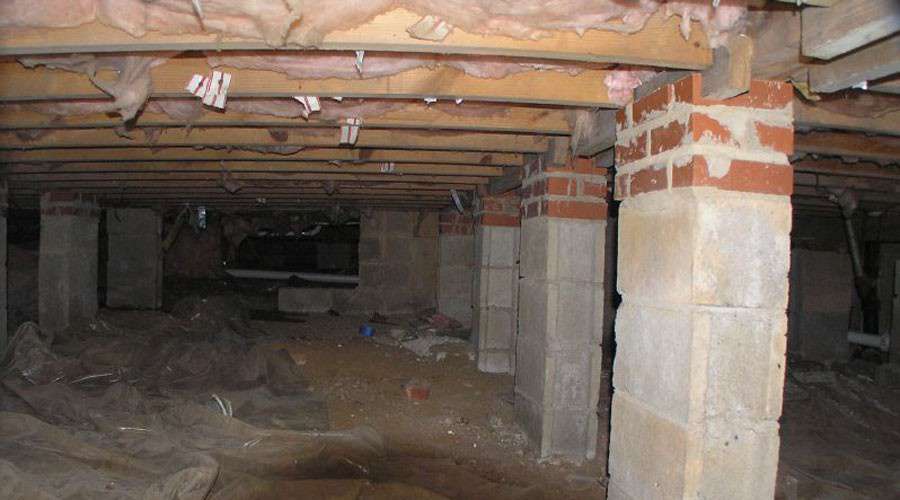














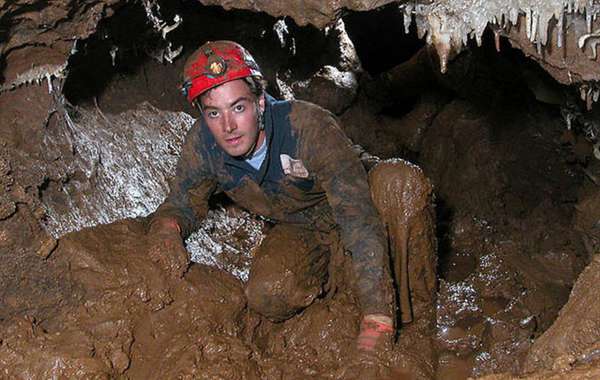
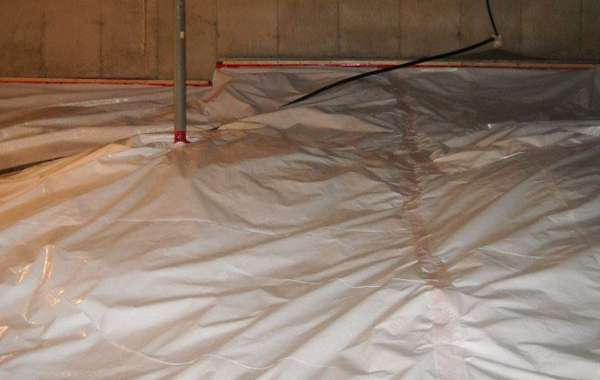
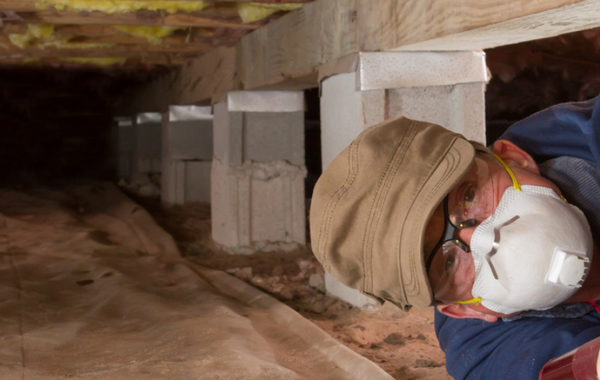
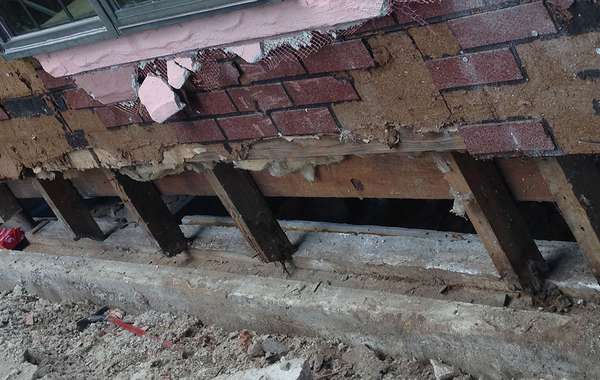
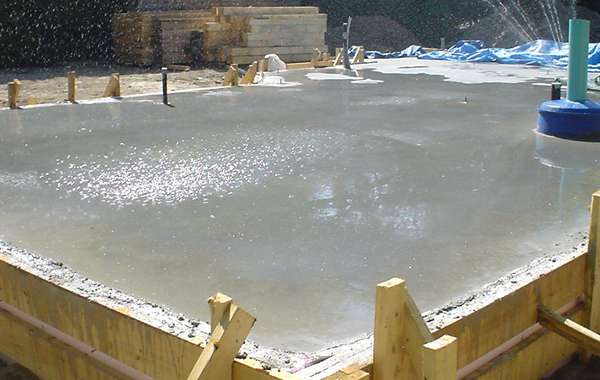
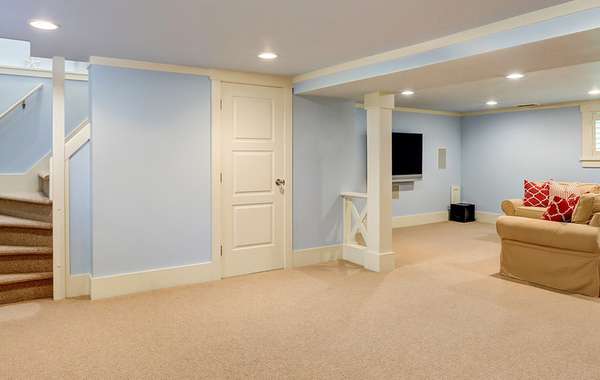
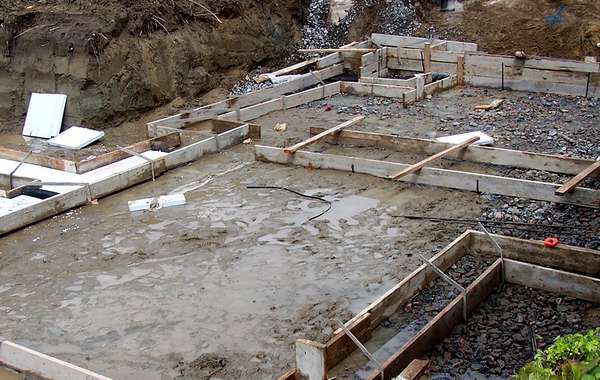
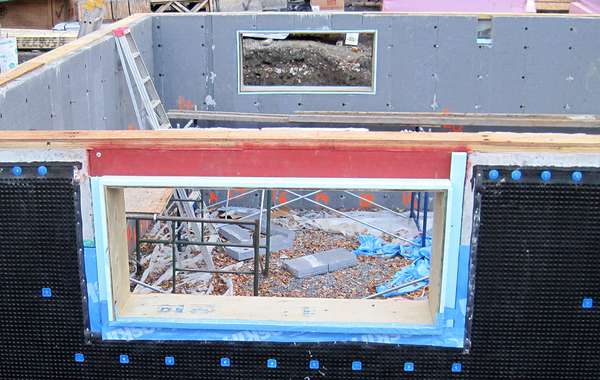
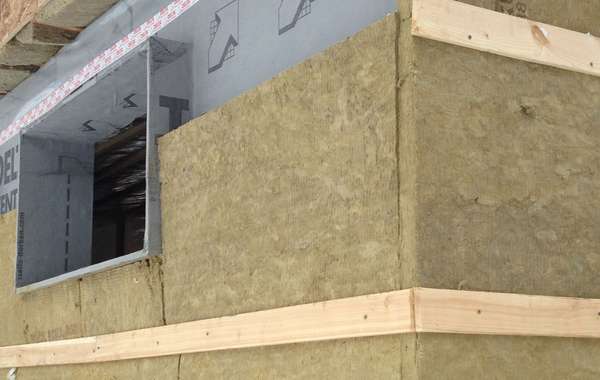
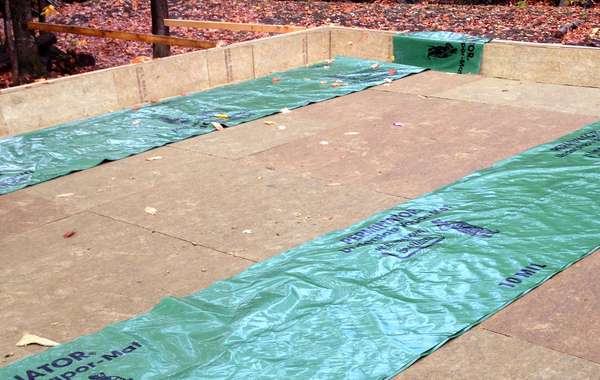
I see you recommend no crawl space vents. You’ll have to change all our Building Codes for that to happen.
There is a lot wrong with building code, so we're doing our best!
你说,“建筑规范有很多错误……”要么是你错了,要么是2000多名建筑官员、35多名建筑师和工程师,以及30多名编写和更新建筑规范的非专业人员错了。嗯…
They are, both, acceptable ways. Science is ever-changing. More and more houses are simply putting poly down and putting spray foam on the walls. I'm not sure how I feel about spray foam coming in contact with the ground, though. 20+ years ago I asked a Terminex man who was spraying the ground for termites before the slab was poured. I asked if we can put foam under the slab for insulation. He said that it would void the warranty as termites will tunnel through it. I dunno.
Yes, Lee, unfortunately they are wrong. If you'd be more comfortable hearing it from a different source then please have a read on the following -
https://buildingscience.com/sites/default/files/migrate/pdf/PA_BuiltWrongFromTheStart.pdf
The author, Joe Lsitiburek, is one of the most internationally respected names in building science. Here is his bio, and if your credentials are comparable to his and you can provide a counter argument we would be most happy to hear it.https://www.buildingscience.com/users/joseph-lstiburek
And - if you are able to read the article with an open mind, you will no doubt learn about several other building techniques that are allowed / required by Building Code that are contrary to the basic principles of building science.
在土壤上方放置防潮层不是会导致霉菌滋生吗?
Hi Geroge,
There won't be anything appealing going on underneath the vapour barrier, no question there, but that membrane is the opposite of an invitation. It's separating the humid, spider and bug domain from your home. Just don't slice a hole and crawl underneath it. A crawlspace is not something we ever suggest people build so no, it's not the ideal 'basement' floor situation but it's a lot better than the alternative - NOT laying down a membrane!
谢谢,迈克……在地面上方保持通风空间,并在高出地板托梁一英尺左右的高架(4 × 4或相等的)支架上设置防蒸汽屏障怎么样?(Since there's already a crawl space, one just has to make accomodations)
Hi Geroge, sounds to me like you mean a 'floating' vapour barrier of some kind that you could crawl under, is that right? Let me know what benefit you see in that, I can't think of any off hand. It sounds like a lot hassle, and if I'm reading you right then you would have a wooden support structure in a high-humidity enclosure due to the vapour barrier above it. That would again, be better than no barrier at all as it would at least reduce the amount of humid air that would be exchanged with the air in the conditioned space above, but It would only be a matter of time before the wood started to rot.
我认为空气与上面的空气混合的风险更大因为下面的空气体积大,热空气上升的自然叠加效应以及有某种支撑结构的穿孔的几率增加。See this pageall about balancing air pressure in a house来理解我的意思。
Is it the visualization of bug life below the vapour barrier that has you looking for other options? That really sounds like a hassle to build and I think it would be pretty costly, I would suggest instead that you price out the option of applying spray foam on floor of the crawlspace. This is a significantly more expensive solution, but it will work very well.
If you do go that route, be sure to choose a spray foam brand carefully, I think it's linked above but here is our page aboutnew blowing agents for foam insulation don't cause climate change.
Mike,
Thank you for the thoughtful artice and information. I have a few questions if you wouldnt mind answering.
I have a humidity problem in my vented crawl space (I believe) and am looking to mitigate this prior to installing hardwood flooring. Presently I have been seeing 70-90% humidity in my crawl space (as indicated by a hygrometer I placed there). Granted, I live in the PNW and we are in our rainy season. My subfloor is reading (using humidity probe) around 12.5 humidity while my hardwood flooring tested at 6.5 - so this is well above the allowable limit to install)
目前安装了一个蒸汽屏障(很随意,没有覆盖所有的地面空间),经过仔细检查,我没有发现积水。( As a side note, I intend to install radiant heating (hydronic) in the joist bay beneath the subfloor with transfer plates) .
什么样的方法可以把地板的湿度降低到可接受的范围内,从而安装硬木地板?
Hi James,
That could be a pretty quick fix. I would repair the vapor barrier first and make sure it covers the entire If its ripped and in really bad shape then install a new one if you have to; this is also the time to do a passive radon stack if you don't already have one. I would certainly encourage you to test the air for radon contamination if haven't already.
The other problem is probably the fact that it is vented. If you live in a humid region (which being in the Pacific North West is a strong possibility), then bringing in humid air is not helping matters. A crawlspace is best treated as part of the conditioned space. Those two steps and adding a dehumidifier may solve your problems.
In a cold climate like eastern Canada, where the situation is complicated by high water table (low flood risk), which would be the preferred foundation in your mind; a raised slab (stem wall) or a vented crawl space to accommodate hydrostatic issues in the unlikely event of flood waters?
Hi Duncan, there is no situation I can think of where I would list 'crawlspace' as my preferred building technique. I'd pretty much always choose a slab unless there is a need to be below grade with a basement.
Building a slab on grade on land with a high water table can be tricky if you are building a thickened edge slab (a footing), so a raft slab is perfect in that situation in such a case. You can also ad a lot of fill and raise the home, though that comes at a cost and it may not be a final level that you want.
See our page here on how to build on problem soils with raft slabs.筏板的底部是平的,经过设计,可以将负载均匀地分布在整个表面。所以你可以在较软的土壤上建房,而且你不需要挖下去找地基,所以没有撞到水的风险。We just built one in Wakefield, QC, here is aslab on grade installation videoso you can see how this kit goes together, and if you like if you like it then send us an email at[email protected]and we can get you a price.
My spray foam contractor suggested removing the bat insulation in the floor joists after the crawl space was encapsulated. Your thoughts?
Hi Darell, if they've done a full spray foam job - meaning, all the walls as well as the floor, then that sounds like the right thing to do. At that point the crawlspace is part of your heated space, so there is no need for a thermal separator between above and below.
My crawlspace is similar to one of the gentleman who was seeking answers for his crawl, which involves hydronic in floor heating.
What we’ve done so far:
我已经把盒子的两端和混凝土墙喷上泡沫,然后在泥土地板上形成13英寸的12毫米多边形重叠。我想这是一次“条件反射”爬行吧?一个完整的信封吗?
We are the new owners and were told the perimeter drain was newly completed. Unfortunately for us.... this was untrue.
我们目前有水聚集在角落里(坐在聚的顶部),只是试图通过雨季来解决所有的问题-从清除水和修复周边排水开始。
After these things are repaired, my intention is to air it out, dry it out, and re-poly. If a rainy season goes by without any issue, I was planning on pouring concrete over that poly.
想法吗?
Any help is greatly appreciated as we are told so many things. Vent- NO vent....Insulate the floors for the hydronic floors to be more effective, etc..
The hydronic system is above the sub floor and covered with a finished concrete FYI.
Thank you in advance for any advice you may have!!
Tawny
我的房子建在地基上,所以没有水泥墙需要密封,只有胶合板裙板,这些裙板甚至连地面都够不到。在这种情况下,是否有可能对这种方法进行修改?(我真的想摆脱那些到处下垂的蝙蝠……)
Hi Denise
如果球棒开始掉下来,你可以把它们移开,并从下面重新绝缘搁栅。如果它离地面很低,没有太多的空气流动,你也可以在地面上放一个6毫米的聚膜,在它上面放一些石头来固定它,确保它不会因为让水聚集而成为一个问题。如果这是一个问题,它会减少水分。
You could also spray foam it from below, that would give you an air seal and plenty of insulation, so you'd be much warmer for sure.看看这一页,寻找低排放的喷雾泡沫,选择最好的品牌。
如果你正在寻找一个DIY的解决方案,你可以把新的球棒放回去,但这并不能提供空气密封,你觉得它通风吗?如果有胶合板或OSB底层和地板在顶部,那么你可能不会太漏,但如果没有什么,只有地板,你最好以某种方式密封空气泄漏,这就是喷雾泡沫做得很好的地方。
如果你做球拍,我可能会选择岩棉而不是玻璃纤维,因为它们更坚固,可能会更好地留在原地。你也会是明智的,然后钉一些钻石板条金属板,以保持它,防止动物进入。
My house is 11 years old and has a partial crawl basement. Bad idea. Built on piles with 2’’x6’’ walls 30’’ high. When this was built, my thinking was that this crawl space would be warm and thus keep the floor warm. This has not been the case. There are heat ducts running in that space.
The walls are well insulated with 2’’ foam insulation added inside, the joist spaces stray foamed, there is hard foam insulation all over the very uneven ground floor (badly done) and a vapour barrier all over the whole ground floor and attached to the walls. (not sealed) You would think that would do it but no. The soil outside only comes to about 4’’-5’’ from the bottom of the pony wall. What might be happening is that with the Manitoba cold, the frost goes down into the ground outside and then it comes up inside the crawl space?? Also, there is the mouse and squirrel problem with them always managing to find their way underneath especially when the ground starts to separate from the wall. (The mice have found their way beyond the vapour barrier into the house) How high should the ground come up to the outside wall and does insulation need to be buried in the ground to prevent frost from going down so close to the wall? Should have built a full basement to spare me those problems.
Hi Jacques, that's a lot going on there for sure. To recap just to make sure I'm getting it right - walls are insulated, floor insulated, insulation between joists but heating ducts running through the space?
Rigid insulation on an unever surface is for sure not going to perform well, though the vapour barrier is likely helping a lot.
There are a couple of options I'd consider depending on what budget you have available. Installing spray foam on the dirt directly would solve a lot of problems, you could go up the wall a bit as well to meet the interior insulation, because you are correct - cold from the exterior is coming up from underneath I believe.
Another solution depending on how easy it is to accomplish, could be to add a couple of inches of EPS rigid insulation to the exterior vertical portion of the wall and back fill it. for sure if most of the wall is exposed then R8 or so of insulation isn't a lot for Manitoba. an exterior horizontal (laid flat) skirt of insulation buried under the dirt would also stop a lot of heat loss if you were going to go that route of insulating and backfilling.
Rodents is a whole other issue that you for sure would want to deal with first, here is our page onremoving pests and rodents safely, there may be some info there that could help.
This is a very informative article on crawlspace insulation. It was thoughtful article and information is exactly what I need to fix mine.Thank you for sharing.
我有模具在我的爬行空间,我目前正在得到报价。有个家伙告诉我,一旦他拆除了绝缘材料,就不需要再添加新的绝缘材料了。他说,新建房屋的夹层空间没有绝缘材料。我住在田纳西州纳什维尔的南部,这是真的吗?还是取决于你住的地方的气候?
老粉丝,第一次海报。我有一个小小的(900平方英尺)远离电网的小屋。木材加热,太阳能光伏发电,目前丙烷为DHW(我正在把我的家DHW转换为热泵,然后再考虑在船舱做什么)。主要在夏季使用,在肩带季节使用较少。这个小木屋位于英属哥伦比亚南部的一个岛上,海拔很高,所以很少结冰。小屋是一种西部红雪松木的小木屋(在Panabode上可以看到它的制造者)。它是一个小斜坡,所以爬行空间的一端是12英寸,另一端是4英尺。我花了最后的时间清理小木屋下的材料,以前的主人是一个收藏家。我已经把所有非木材的东西都搬到一艘年度垃圾驳船上,我现在正在搬木头和石头,给一个半光滑的泥土地面。我打算放600万聚。 Presently the sides are only enclosed with cross hatch wood lattice nearing end of life. After the 6 mil poly, would you suggest I enclose the permiter with cement board, pressure treated ply, or something similar? Given the cabin is off grid, there is no power for a fan, though I could do one directly connected to a solar PV pannel I suppose. What would you recco? Thanks.
glad to hear that helps, Chris! If you're putting down metal to replace the wood I'd consider burying it in the ground as deep as your motivation can put it :). The mice will not give up their home easily so make them at least dig to get back in.
I have a question for you. We bought a house that was built in the 1950's last year that is on a crawl space and we had it encapsulated and have a dehumidifier down there. We live in southern Georgia. The humidity stays around 46% in the crawl space but the temperature stays around 80F. This started happening around May/June and i believe this is the reason our house stays so hot. Is this normal? Can we / should we add insulation to the bottom of the floor? Any help is appreciated. Thanks
你好。我有一个问题。我住在一个双层宽的人造房子里,地板上有一个脏兮兮的爬行空间。我检查了我的爬行空间的湿度,被告知它确实有很多的湿度。一些塑料已经完全腐烂,还有一些金属部件因为潮湿而开始生锈。他们想要做一个封装,检查和处理白蚁(如果需要的话),清理所有东西,处理木材、墙壁、搁栅、窗台、底层和地面上任何可见的表面真菌。然后,他们想在爬行空间的墙壁上应用Borafoam隔热板,并密封地基的通风口。他说他认为我不需要加湿器。这听起来对吗?谢谢你! I'm a widow who is clueless about such things, so just looking for advice. Thanks...
大家好!我和妻子在西雅图地区购买了一栋有100年历史、720平方英尺的房子,我对爬行空间有一些担心。它是用桥墩和梁基础建造的,电流绝缘,蒸汽屏障,踢脚等都是很糟糕的情况。我最好是用一些防鼠/昆虫的东西来代替裙边,铺上一个蒸汽屏障,喷上泡沫来密封/绝缘吗?或者这个假设由于基础类型而不正确?
Due to the small footprint, I was also considering heating via radiant floor heating. Will I run into any issues if I don't insulate at the floor itself?
Thanks so much for the wonderful information!
Hi Kevin, thanks, glad you are enjoying the site!
喷雾泡沫是一种蒸汽屏障,你可以直接把它喷到脏地板上,所以如果你把地板上的所有东西都清除掉,然后喷上泡沫,可能一下子就解决了你的问题。
The term ‘skirt insulation’ refers to an exterior perimeter skirt of horizontal insulation, and I’m thinking you’re talk all interior here, is that correct? I’ll run with that assumption, and say –
Insulating the exterior of your walls is better than the interior of your walls, whenever possible mostly to protect foundations from the freeze / thaw cycle that happens when you insulate them from the inside in cold climates, and particularly with block foundations which are much weaker than poured concrete. However, the Seattle area is a pretty temperate climate so there isn’t as much concern. You could spray foam the entire interior (walls and floor) and then there is no need for a radiant floor above since the warm air below will keep the floor at a comfortable temperature.
If you go that route, I would also suggestspray foam with eco-friendly blowing agents, they are also said to be less toxic, so there would be less off-gassing into your home.
你好,今天有一家白蚁公司来拜访我(也就是为我做年度体检的公司),他们也安装了爬行空间除湿器。我的硬木地板一直在拔火罐,有人建议我安装一台除湿机。当顾问在这里为除湿器咨询时,他建议我不需要绝缘材料(地板搁栅之间的板条)。爬行空间实际上是泥土地板,并有蒸汽屏障和通风口密封。你实际上可以站在“爬行空间”,所以不低到地板。我们在弗吉尼亚州的威廉斯堡,冬天很温和,但夏天很潮湿。关于拆除绝缘材料的想法?
保温是为了防止热量从一个地方移动到另一个地方,所以如果爬行空间被加热,那么就不需要保温了。这并不意味着它是一个问题,但它不需要。如果就像你说的,地板上只是覆盖着一层蒸汽屏障的灰尘,那就会有热量流失。所以绝缘的理想场所是覆盖住泥土。
But, if you keep the house warmer than the crawlspace then the insulation will provide you will some additional comfort. Is the insulation moldy? If it is then remove it, but if it isn’t moldy and you have a poly barrier and a dehumidifier, then it likely doesn't need to be removed as you will have dealt with your humidity levels and that is what causes the problem in crawl spaces.
我们最近拆除了位于马里兰州一栋26' x 40'住宅18英尺高的爬行空间内地板托梁之间潮湿和掉落的玻璃纤维绝缘材料。它有严重的白蚁损坏的木材,现在已经更换,然后由当地的白蚁承包商进行了充分的喷雾处理。房子25年前建成的时候,泥土地板上铺着聚塑料,原来的建筑碎片留下的地板非常凌乱,原来失效的绝缘材料落在了上面,所以我们在上面的工作中铺上了新的聚塑料,这样在进行上面的工作时,我们就有了一个更干净的表面。白蚁承包商坚持认为,地板搁栅之间不应该重新安装绝缘材料。因为它只会吸引冷凝,然后再次失败。我不太同意这种想法,因为我怀疑冷凝物会在楼板托梁和地板上堆积,那样会更糟。我想在楼板托梁之间放上玻璃纤维隔热材料,然后在楼板托梁底部钉上聚乙烯保温材料,在新的隔热材料下面,并贯穿整个房子的底部。我怀疑这将大大减少或消除冷空气在隔热层上的冷凝,并通过减少冷空气通过隔热层到达地板的途径来帮助住宅隔热。我想听听你的想法,在这种情况下,你会建议让爬行空间的外部通风口打开还是关闭?谢谢你!
Hi Chris
Insulation doesn't 'attract' condensation. Condensation forms when warm, humid air meets a cool surface. If you reduce the humidity that should solve the problem. So the insulation isn't the problem, its the moisture in the air. I think your best investment at this point is a dehumidifier, and then insulate it. The new poly on the floor should also help a lot. The problem with how you suggest moving forward is your positioning of the vapor barrier - if you put it on after the insulation then its on the wrong side. A vapor barrier needs to be on the warm side of the insulation.
由于高度非常有限,我认为最好的办法是喷泡沫,因为这将是绝缘,蒸汽屏障和空气屏障的结合。If you go that route, we would suggest you try to find aspray foam installer with less harmful HFO blowing agents.
Thank you Mike, I agree that the insulation will not "attract" mositure, just repeating there what the termite contractor said, which I also disagree with. I feel that the poly will keep the humid air away from the insulation, and your suggestion of putting the poly above the insulation will only allow the humid air to again contact the insulation itself, and have the same problems all over again. The problem with spray foam insulation is that you then permanetly coat all the electrical wires, junction boxes, and plumbing pipes with foam, causing a real mess for future repairs or upgrades. The main purpose of the poly under the insulation is to keep the humid air away from the insulation, so that it does not condense upon it. The secondary benefits are as a vapor barrrier (to humid air when humid, to warm air when warm, and to cold air when cold), and also to help prevent the insulation from falling down in any areas where it is not a snug fit between the joists. What about the existing crawl space ventilation vents, would you suggest leaving them open, or sealing them. If I put the insulation and poly in as I have noted, and close off the crawl space vents. I do not see a reason why a dehumidifier would not be necessary, as there will be minimal air flow or changes in the crawl space, and any moisture that condenses will be on the underside of the poly, and only drip down onto the poly on the floor. Please advise if I am missing something here?
I have a thin plastic vapor barrier that was installed 30 years ago in my crawl space and it has many holes in it. I want to put a new vapor barrier down. Should I put the new one over top of the old? Or should I remove the old?
我从YouTube上的一个渠道听说,把新的放在旧的上面会困住空气并产生难闻的气味——这是真的吗?
I appreciate the article and the building inspectors and architects are wrong on so many things. I have managed a major home improvement retail company and I have done many construction projects. I currently own a home with a crawl space that is 5 feet on one end and 1 foot on the opposite end. It has foundation vents around the foundation. I currently have 6 mil plastic on the dirt floor and the previous owner installed unfaced insulation between the joists. I am planning to replace the insulation soon. Should I use faced insulation? I would ro use Manville with moisture control. Thanks so much.
我有一个小屋,我们想全年使用,它是开放的,小屋的底部是绝缘的,也就是地板下面。小屋在码头上,我们想要关闭小屋的一半后,它将是一个爬行空间,高度为2'-4'。小屋的后面,实际上是前面,有一个缺口,从下面渗出的水和动物的手工艺品。我们将在小屋的后面使用经过压力处理的胶合板,并将其包裹在蒸汽屏障中,密封木板和地面之间的任何缝隙。然后,我们将从外部回灌,以防止水进入小屋下,并将水从小屋的后面引到两边(沟渠、砾石和垂瓦)。As for the critters we are hopeful they will go away :)
Along the sides of the cottage to enclose the crawl space, we are planning to frame on grade (there is a huge rock under the cottage that spreads across most of the area ) however in areas along the perimeter I am not sure if placing the framing on the ground is a good idea. We will then use 2" foam board between the framing and use 6mm vapour barrier on the ground and seal it to piers and framing as much as we can. Is this sufficient or do we need further insurlation? Do you recommend windows on either side of the crawl space in the event we have issues with moisture to air out the space? I see you do not recommend vents. Is this sufficient to keep pipes, water heater, water pump from freezing? Should we have a heater down there and if so, what do you recommend. The crawl space will be approximately 10'x20' area with height of 2'-4' as above.
The front portion of the cottage (which is actually the back facing the lake) we are planning to frame as well for storage and a play area for the kiddies. We would like to finish this area as well, but it will have a 6.5' ceiling height. Should we also use vapour barrier underneath the framing for these 'rooms'? We will have windows, sliding door and baseboard heating. There is some rock there too that we will have to be creative around. Can we use posts on rock/ground or should we be looking at a more concrete base? We will also build up the sides of the cottage as well to direct water away from the sides and and further insulate the cottage.
Can we add siding on the underpart of the cottage on the exposed plywood framing we will be using to frame the exterior at a latter to protect the plywood and is it okay if the plywood is pressure treated or should we not use pressure treated? Or do you suggest using decorative trellis instead?
谢谢你!
嗨,我们在泽西海岸的家建于1922年。地下室的一半已经完工了。其余的是爬行空间和2年全年的门廊没有进入爬行空间,如果有你不能适应它。在爬行空间或地板搁栅没有绝缘。能不能派个人把绝缘材料吹进去。椽下有管道。TIA。George Boardman
I'm curious as to the answer to your question George. I also have a small crawl space under a cottage that is too small to access. I'm thinking I'd put down the 5 mil poly using poles to spread it out as best I can, but wonder if it would help to then blow in cellulose on top of the poly for additional insulation. I live in New England so widely varied temps. BTW - great informative article!
Thank you for this article. It's given me confidence. My house was built in 1898 and I have a crawl space of boulders, dirt and stone & mitre. I've been told to spray foam the perimeter and put poly down over the dirt & boulders. I'm located in the mountains in bc. I can't get a contractor to schedule the insulation and just spent $10k on a new furnace. I'm desperate for the full heat experience! So, I've kind of decided to do it myself. It makes sense to lay the poly first then spray foam.. can the spray connect with the poly? What do you use to seal & attach the poly? I can get a spray foam kit for $400 and it covers 250 SF - The crawl space is approximately 600 SF. Would 250 be enough? I beleive R20 is to code here. What if I can't access the whole perimeter? Can that part be left? Is this a bad idea? Thanks, Courtenay
Have a 1975 home built on half slab half crawl space with a new addition crawlspace on the back. The new addition has insulation between joists and has black poly down ( abliet not super great). The under side of the poly is wet and highly uneven. Is there anything I can add to level the floor out some before reinstalling new poly and taping it? I have already blocked most vents with foamboard and spray foam. can I do anything to the brick walls? and should I install clear poly to the bottom of the joists?
Ecohome.net is my new obsession. Thank you so much for putting this together. It's an incredible resource!
We just bought a house built in the 1850s with a stone foundation and a 5' tall "crawl space" underneath (I say that in quotes because there are stairs going down there and you can walk through it while stooped). There's definitely water damage to the foundation, which we're first solving by fixing the gutters outside, but I was interested that there's no mention of waterproofing the foundation here either internally or externally.
I know the ideal way of doing this is externally, but was told by our inspector that given the age and condition of the stone foundation this might be impossible (digging around an old stone foundation might jeopardise its integrity).
我见过从内部防水的房子,有一个法式排水管和地基包(排水到水池),但在这篇文章中没有提到这种类型的防水。如果没有外部防水的可能性,你会推荐这种产品吗?
Presumably if this were done, then we could still do the floor poly, and floor/wall insulation after the fact. Given the possible usability of the basement (storage and mechanical devices) would you recommend then pouring concrete on the insulation to level everything out?
Thanks again!
Hello, Question: Must I use the baseboard heaters in my 2.5ft crawl space? 1960 MCM bungalow, Vancouver Island, Concrete block foundation, no vents, vapour barrier installed, walls not insulated (installing foam board was advice from inspector), two baseboard heaters installed for a 1200sqft space. The heaters are quite expensive to run. I turned them off and don't find the floors too cold (slippers!) and my heating bill is now reasonable. Moisture in the house is 50-60% in all rooms. Can I leave the heaters off? Would you suggest a dehumidifier in this case?
A response below answered my question. Thankfully the cinder blocks are in great condition and at low risk of damage in my climate. I'll be foam insulating the walls, sealing poly to the foam, installing a dehumidifier and making sure the entrance isn't leaking lots of air. Thanks
1st off, don’t know how i didn’t find this website sooner!! Lots of good questions and Great advice!
我住在加州卡比托拉(Santa Cruz, County),距离旧金山湾区的海滩约半英里。
目前是54英尺,最低值是41英尺。我们很少低于40度。但对我们这些沙滩流浪汉来说,太冷了!今天室外的湿度是65%。我们已经连续下了四五天的雨。我们所在的地方不是特别多雨,只是偶尔会下雨。
My house was built in 1967, my grandparents where the first to live in it, and passed on to my mother and now my family. it is about 1500 sq. And has slab for the living room and garage and Stem Wall foundation with about a 2 foot crawl space! Tiny!! maybe 18" in parts.
We are starting to smell that musty odor again. And White looking dirt underneath.
我们的院子过去常常被雨水淹没,积水要好几天、好几周才能散去。高水位?
We just installed about 40 yards of concrete Patios, new driveway and filled in by the walkways so the whole perimeter of the house is concrete. (one small 2x4' dirt / well base rock)
我们家有一个水池水泵,它会在我的房子下面积水几个星期。现在水不多了,下面有一些塑料蒸汽屏障。那是因为有一次我们工作的时候房子下面很泥泞。
My plan is to put 6ML over every inch under that house which is 23x48'
-听起来我应该把房子下面的通风口关上?
- The crawl space is not heated, and no Batt insulation is installed. If I insulate, should i put a vapor barrier between the sub-floor and insulation and below (hold them in and extra protection) that also and on the dirt floor?
- And is the crawl space supposed to be heated? Or insulated?
- Never had a dehumidifier under the house before, is that something we should do? Maybe in the rooms too. We have the ones for the shelves in the closets and some rooms with mold proof paint. But we do get some mold at times. The Ocean air…
-我在看喷雾泡沫的报价,但我在一家重型土木建筑公司工作,我做了大部分的土地移动,形式,钢筋,水管,我的天井的电力。所以我倾向于成为一个主要的diy者。但如果要花2000美元左右才能买到喷雾,我的时间比我的钱多!
- Should we treat the dirt with vinegar first? Or a different Mold killing product?
- There might be some minor cracks in the stem wall foundation from the Earthquake in 89, but the siding comes down low to the ground, so not sure how well I can seal that from the outside or inside. Maybe the water / moister is coming up from the ground?
Im trying to mitigate all the issues so I don’t have to continue to go under the house. I don’t like confined spaces, or spiders!
Thanks!
Kevin from Capitola
你好。在北卡罗来纳沿海地区建造新家。做爬行运动有两个原因——一个是地板更软(足底筋膜炎,脚踝硬件和背部不好!),还有就是担心水管漏水,因为平板很难找到!所以选择硬切割泡沫密封爬行或…喷洒泡沫作为一个密封的爬行空间。地面都有塑料蒸汽屏障。我们将有一个工程木地板胶合,并没有计划加热或条件的爬行空间。我们将在房子后面的一个房间下面有一个可用的门,这个门可以自己伸出来存放一些东西,比如户外家具。我们还会在包装中加入一个大的除湿器,我们可以选择任何一种泡沫。我不喜欢人们说塑料下面会有模具的想法。 This makes me nervous and I worry if workers under there Could tear the plastic and we would not know! So....
1. Which insulation type do you recommend? 2. What thickness plastic for floor you recommend?
3. does the foam overlap the plastic at all?
4. Will just the walls be insulated or the underneath of the floor as well? 5. When building a new house -at what point do we test the crawl for radon? 6. Would it be costly to condition that space on a large foot print house and what is the benefit if so. 7. Can we not condition. The space ?
8. WHAT IS THE ECO FRIENDLY SPRAY BRAND?!
你好,第一次购房者,我有一个通风通道。氡管从地面穿过,从屋顶流出。我在地面上设置了一个蒸汽屏障,下面的整个空间都是石头。上面的楼板搁栅是玻璃纤维隔热板。What is the best thing to do
to keep the areas around better insulated? Would foam board along with sealing rim joists be where I should start? If so, after that would the batt insulation come completely out of the joists or stay in place? Seal all vents in the crawl space? Does a crawl space next to a finished room (family room) affect the temp and humidity of that room? Thanks for all the help in advance! Hoping to get my split level home much much more efficient. Open to all input and help on the matter!
Hi! First off, very informative page for crawlspace issues, thanks!
We have an unvented crawlspace, a torn old vapor barrier, no floor insulation and no wall insulation. Doesn't appear to have any standing water or mold issues.
We are thinking of insulating the cinder block walls with foam board and replacing the vapor barrier to run up the walls a bit. Possibly a dehumidifier too. Thoughts?
Sure, good idea. Just check the joints between the blocks, if they're cracked and shifting at all then insulating the walls may make that worse as they so far have stayed warm all winter (I assume you've been heating it) and now they will freeze. It's just worth a look first. And yes on the dehumifier, try to keep it below 50, even 40% RH if you can.
One of the most thorough articles on this topic I've read. Since the comments seem to remain active, I'll post my own conundrum:
We live in an early-1900s farmhouse near Portland, OR. Our crawlspace is about 3' tall and vented (which is common here due to the PNW marine climate and need for radon mitigation; The crawlspace currently has a shoddy vapor barrier (with construction debris left underneath), leaky panned bay return ducts, fiberglass batt insulation between the floor joists (with no subfloor), and dampness in places underneath the vapor barrier (but no standing water). RH has consistently been creeping into the 80% range.
Unfortunately, we have a mold issue. We know that we need to remove the old vapor barrier, insulation, and construction debris. My question is – what do we do to prevent it from happening again? My current thinking is: 1) Install a more durable 12mil vapor barrier with taped seams 2) Eliminate the moisture source (we think) by patching a foundation crack, improving exterior grading, and routing the gutter downspouts further downhill 4) Replace the panned bay return ductwork with something less leaky 5) Install new insulation between/around the floor joists - either better batt or closed-cell spray foam (any preferences?).
Does that seem reasonable? I know everyone likes an unvented crawlspace with rigid/spray foam wall insulation and a dehumidifier, but I'm reticent to go that route due to the radon issue and because I'm skeptical of any solution that requires continuous power supply to keep it dry. We've had too many neighbors have their dehumidifiers/sump pumps/etc. die at the worst time... :) Your thoughts warmly welcomed!
感谢这个伟大的服务!热爱生态家园所代表的和所做的。还有Ecohome的回应。我住在渥太华北部的一所房子里,在我们的主居住层下面有一个大约900平方英尺的混凝土爬行空间。它基本上是干的,尽管有时会有一些水通过砖的裂缝进来,也会在水池泵的低点聚集在聚下面。我注意到这个水泵从来没有开过。有老鼠粪便的证据。爬行空间有聚在地板上覆盖的泥土作为氡系统的一部分,并向上走了一点。使用好的除湿器可以降低湿度,通风口也会被堵住。爬行空间没有加热,但我想知道在墙壁上喷洒泡沫是否有意义,如果有意义,是使用开放式牢房还是封闭式牢房? I'll double check but I think I can find blowers here who use Demilec or Elastochem, the most responsible sprays? Whereas closed cell has a higher R-value per inch, I have also read that open cell may actually be better in cold climates and also has less of a toxic or climate change impact. Also that while open cell does not provide a moisture barrier, this could be a better way to deal with dampness - allowing it to leave the wood and be dehumidified in the crawl space rather than causing rot but is a better air barrier, compared to closed cell. If open cell is used, does it need an additional vapor retarder on the interior side, e.g. a spray vapor retarder paint? The goal of insulating would be to lower heating bills over time (and given my electricity is green in Quebec, getting a pay back from this investment), have warmer upstairs floors and reduce dampness which could contribute to mold. Do these different goals call for different solutions? Would it make sense to insulate a crawl space and not heat it? Is there a recommended minimum temperature to heat it at, and is the return better the more you heat it? Lastly, are you concerned with spray foam hiding termite activity and what do you think about spray foams using soy? Lots of questions. Thank you.
我在弗吉尼亚州的家里遇到了一些白蚁问题。白蚁承包商去处理这个问题,发现爬行空间有些潮湿问题。他们拆除了旧的蒸汽屏障,换上了新的,还有一台除湿机。地板托梁之间的一些绝缘材料掉了下来,所以他们告诉我现在我正在使用除湿器,他们现在已经密封了通风口,安装了除湿器,我应该完全拆除绝缘材料。他们告诉我,这不会影响家庭的舒适。在这种情况下,房子和爬行空间之间没有绝缘是正常的吗?如果感觉地板只是一个持续的冷空气来源进入房子的其他地方,反之亦然。
If there is no insulation between the crawlspace and home above then you're just treating it like conditioned space, so it's best to have the exterior insulated if you're going to do that. But yes, it's fairly normal.
As for the vapor barrier, they often cause more harm than good in a home because their role is often misunderstood and they end up trapping moisture where it shouldn't be, especially in basements and crawlspaces. So when you say you had moisture problems and 'replaced' the vapor barrier that made me wonder if it was the problem. Where is the vapor barrier and on which side of the insulation - warm side or cold?
Due to the termite treatment and the need to inspect it they said we really can't insulate the exterior walls. So I'm stuck with a space under the house that is essentially at the mercy of the weather elements temperature wise and I wonder if it is just going to drive my heating and cooling bill.
蒸汽屏障是铺在污垢和粘几英寸的墙壁在爬行。除了蒸汽屏障是新的唯一不同的是我现在有一个除湿系统。我不确定保温面是暖面还是冷面,但既然是在爬坡,我就假设那是冷面。
很高兴听到蒸汽屏障上的这句话,在爬行空间里覆盖灰尘是最重要的一件事。在这一点上,是的,你是受天气的摆布,所以你的选择是-你可以绝缘之间的托梁,但这是棘手的,因为你真的想要一个蒸汽屏障在温暖的一面,这是很难做到的,因为你需要把它放入托梁腔在绝缘之前。另外,你也可以把刚性泡沫放在搁栅的下面,因为泡沫会成为一个蒸汽屏障(你会想要相当密封,否则凉爽的空气将只是循环)。泥土地面是否平整到可以铺上坚硬的隔热层?你能把外墙的内部绝缘吗?
空间是相当平坦的,有很多空间爬行,使它更容易在空间工作。所以这感觉就像我被卖给了一个部分的解决方案,那真的不会让我比我现在的处境更好。我可以对外墙内部进行绝缘处理,因为需要进行白蚁处理和年检。你是建议在地板上用硬泡沫垫屏障吗?如果我这样做,冷空气会不会通过墙壁渗入到房子里?由于需要监测白蚁活动,似乎真的没有一个好的解决方案。
Don't think of this as heat loss through air movement and leakage, think of it as radiant heat transfer. You can read more here abouthow heat loss happens through conduction, convection and radiation.如果地板是平的,你铺上2 - 3英寸的泡沫层,可能会有轻微的损失通过关节,但这比没有它要好得多。如果它们只是躺在那里,你需要进入爬行空间的一个更远的点,你可以把它们举过去,然后再把它们放回去,假设你不需要定期这样做。
粉刷墙壁也会很好,但就地板和“辐射热传递”而言,爬行空间的暖空气会不断地加热脏地板,我想顶部的泡沫会大大减少这种情况。所以不要认为这是一个全有或全无的解决方案。也可以选择将泡沫粘贴到墙的内部,要么用粘合剂(在夏天,它可以更好地固化),要么用带子和混凝土螺钉。
很好的信息,我学到了很多。我可能没有以最好的方式设置我的爬行空间。3英尺高,1600平方英尺,全是水泥、地板和墙壁。从来没有任何水分问题,一年四季都很好,干燥。在检查员的建议下,我绝缘所有的周边墙与胶粘剂刚性泡沫板。从水泥地板到搁栅都紧紧地连接在一起。我没有对水泥地板做任何改动。我们在冬天很少看到低于零度的地方。(加拿大西海岸,温哥华地区)有一天,气温略低于冰点,我走进爬行空间,惊讶地发现那里没有热源,竟然如此温暖。我仍然有原来的板条绝缘之间的所有楼板搁栅,没有与它的蒸汽屏障。 I was considering replacing it with new stuff or with rigid foam pieces because it's been pulled out and put back in many areas from past owner's renovations and now from our current wiring and plumbing changes, so it's not in the best shape. After reading information here I'm wondering if it even needs to be there at all? Also, there are three vents which I have been closing in the fall and covering over with a piece of rigid foam and opening in the summer because I thought that was the right thing to do. Should they be kept closed permanently?
The insulation between the joists is probably helping keep your feet warm, it would also be contributing a bit to heat savings as the crawl space is cooler. Better if it had a vapour barrier but given the relatively mild temperatures in Coastal BC and that you say it is dry, you may be able to leave it no problem. I would pull a batt down for a look, and if it’s perfectly dry then that’s pretty much all you need to see to know it’s doing fine.
至于crawlspaces地板-你经常去那里吗?因为它是浇筑的混凝土,我假设它是平的,一个非常简单的绝缘工作如果你不经常去那里,只需要买一堆4x8的2英寸硬EPS泡沫板,然后把它们铺好。你可以在上面走一段路而不会造成太大的伤害,或者你可以把它们放在一边,以便在你需要访问的时候到达爬行空间的更远处,然后再把它们放回去。不管怎样,如果天气干燥,墙壁和搁栅之间都是隔热的,而且气候相当温和,我认为只要你的脚足够温暖,那么就没有必要迫切地从事任何重大工作。
As for ventilation – letting hot humid air into a crawlspace in summer can actually lead to moisture condensing on the cool concrete floor or even the floor joists, so I’d keep the vents closed summer and winter and just have a dehumidifier set to keep it at 50%RH.
谢谢你的快速回复。绝缘材料非常干燥,所以它似乎没有任何好处,除非它有其他用途?水泥地面平整。现在我们已经完成了装修,我们将不需要进入,所以我可以考虑铺设EPS泡沫,但我想知道这将产生多大的不同?房子的地板很好,它们变得更凉爽了,当我们遭遇短暂而罕见的寒流时,我甚至不会说冷。如果我在爬行空间地板上做EPS泡沫塑料,会大大降低家庭取暖成本吗?我们的取暖费相当合理,但这些费用当然会继续增加。我很好奇,我们的爬行空间大部分都在地下这能让它不那么冷吗?我们的检查员还告诉我,我们阁楼的绝缘可以更充分,所以这也将在我的清单上。
加拿大的气候非常温和,如果气候干燥,你的脚很舒服,你的账单也合理,那么这并不是一个真正紧迫的问题。
Hi Mike,
Long time reader, first time posting as I'm facing a similar situation to Mr. Parnell above except that the building is a cottage one hour north of Ottawa on a stem wall foundation. I've read the articles of Joe Lstiburek, yours, and others, and I can't find a definitive answer to the question: in a cold climate, is insulation over the dirt floor of an unvented, closed crawlspace needed? I know it should be present under a slab, but that's to control frost heave.
As I run through it in my head, the dirt floor of a crawlspace theoretically has an infinite capacity to absorb heat from above, so insulation should be important. But I can't find any code or expert recommending it, and I wonder if it's that important if I'm only heating the crawlspace to 5C during the winter (electric baseboard heat)?
I'm hoping you can shed some light on this, thanks in advance!
Hi Erik,
搁栅隔热吗?否则,冷空气会爬上来的。如果搁栅之间有隔热层,那么就没有必要对地板进行隔热处理了,但如果搁栅没有隔热层,那么地板可能会有点不舒服。
我知道这个问题的答案似乎难以捉摸,但其实很简单。一般来说,如果你要给空间加热,那就隔热。你绝对应该用一层聚膜来覆盖污垢,以保持湿度,如果表面是平的,你不经常使用它,你可以在聚膜上铺设刚性泡沫片。如果你需要进入空间的其他部分,你可以很容易地举起它们来清理道路,如果走在它们上面似乎会裂开。
它们不需要用胶带或密封起来,好在它们的形状很完美,将来很容易被重新利用。有些人会用泡沫喷雾,如果你能避免的话,我们一般都不喜欢这样。
I can try to help more if you let me know what you have - flat floor or uneven, insulation between joists or not, poly on ground, how much space down there, and if you use it much.
Thanks for the information, much appreciated!
很高兴能帮上忙!
我住在西澳Whidby岛的PNW。最近我让一个承包商更换了爬行空间里的R19背衬绝缘材料。我很惊讶他使用的是没有背板的R30绝缘材料。他还更换了覆盖在泥土上的聚醚。我是否应该担心底层和新隔热层之间不再有防潮屏障?